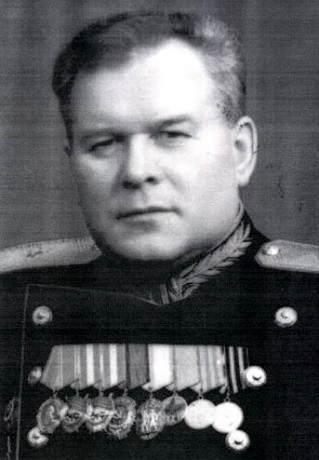Vasili Blokhin (Vasili Blokhin)

Soviet Secret Police Commander. As chief executioner of Josef Stalin’s security forces (variously named the OGPU, NKVD and MGB) he supervised and participated in the mass killings of “enemies of the Soviet state” during the 1930s and 1940s. In 2010, Guinness World Records listed him as the “most prolific executioner” in history. Blokhin was born in a village near Vladimir, Russia, and lived in Moscow from age 15. He was a sergeant in the Imperial Army during World War I, sided with the Bolsheviks in 1918 and served in the Red Army during the Russian Civil War. He joined the Cheka, the USSR’s earliest incarnation of its secret police, in 1921. His ruthlessness won the attention of Stalin, who in 1926 hand-picked him to head the newly-created “Kommandatura” branch of the security organs, specializing in the clandestine murder, torture, and intimidation of political enemies. Although he had some 250 men under his command, Blokhin personally and with savage efficiency pulled the trigger on those put to death at Moscow’s Lubyanka Prison, the Kommandatura’s headquarters. At the height of Stalin’s political purges (1936 to 1939) he may have shot as many as 200 people a night; it appears he derived his assembly line killing methods from slaughterhouses, right down to wearing a leather butcher’s apron, gloves and cap. He took orders only from Stalin and his autonomy is illustrated by the fact that among those he executed were his nominal bosses at the NKVD, Genrikh Yagoda (1938) and Nikolai Yezhov (1940). Yezhov’s successor Lavrenty Beria recommended purging the Kommandatura but the dictator refused, ruling that what he called their “black work” was necessary to the Party. Blokhin’s most notorious act was his involvement in the NKVD’s “Katyn Massacre” of 22,000 Polish POWs in April and May of 1940. Armed with briefcases full of German Walther PPK pistols, he and several underlings shot 7000 Poles over 28 days at the NKVD prison in Kalinin, Russia. As rewards for this bloodbath he was promoted to Major General and awarded the Order of the Red Banner. He received the Order of Lenin in 1945. Blokhin was forced into retirement within weeks of Stalin’s death in March 1953, and in November 1954 he was stripped of his military rank and pension. He committed suicide four months later. With grim irony he was buried at Moscow’s Donskoi Cemetery, where the ashes of many of his victims lie in unmarked graves. Due to the secrecy of his operations, Blokhin’s role in the Stalinist Terror did not become widely known until the first decade of the 21st Century, and it is still a subject of controversy and dispute. (bio by: Bobb Edwards)
Born
- January, 07, 1895
- Russia
Died
- February, 02, 1955
- Russia
Cemetery
- Donskoi Monastery Cemetery
- Russia

